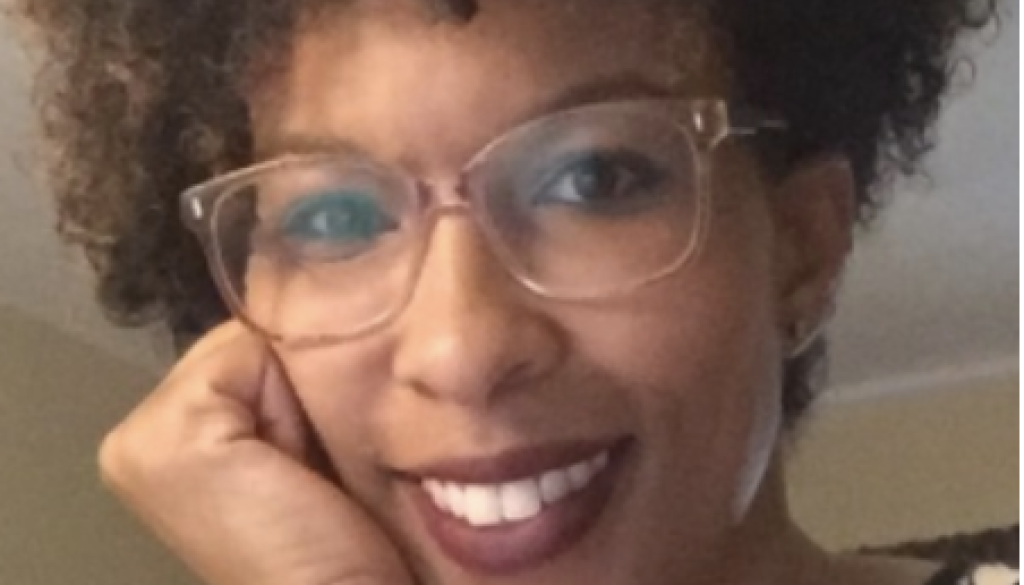The first week of school creates high anxiety

As the 2021-2022 school year commences in-person for most districts, I am preparing to receive students as a classroom teacher at Clayton High School, and sending my own children into the classroom in the midst of global pandemic. Like most teachers and parents, I am nervous, excited, and anxious.
Instead of beginning the school year in Zoom meetings, I walked into the auditorium at Clayton High School to masked colleagues on August 16, 2021. A cacophony of simultaneous conversations bounced off the walls. Even with the uncertainty of Covid, many of us recall the frustration of Zoom classes with little black boxes tiled with the names of students whose faces we may have never seen in person.
One of my teacher superpowers includes building relationships with my students. In a virtual learning environment, this felt uncomfortable and disingenuous. Envision splitting oneself into two — attempting to build relationships online and in person. It is not impossible, but exhausting. There’s a level of interpersonal communication organically taking place on a daily basis during the regular in-person school day that simply does not translate well in the virtual environment. Seeing eyes open wide, furrowed brows, and hearing gut-busting laughter communicate important tells for teachers.
I often reflect on my former students at Gateway Middle School in the St. Louis Public School District especially during Covid-19. School served as a safe haven. Students’ social lives revolved around school. Two of their three meals were served at school. Teachers’ superpowers carried students into the next school day, the next quarter, the next school year.
I know my district implemented extensive measures to ensure the safety of our school community. Districts that mirror the Clayton School District likely have taken similar precautions. It is my greatest hope that the same planning and care extended to all districts, especially those students in St. Louis Public Schools.
Will the economic disparities that exist within our region manifest itself during one of the most challenging and frightening moments of our lifetime? When equality matters most, it does not exist. Bottomline, all students need to be in a school building where safety is prioritized.
A mix of emotions churns inside of me and manifests itself as insomnia and anxiety. I lay in bed mulling over to-do lists and ways I might build bonds with my students, worst-case scenarios, district teacher expectations.
Did I include the warm up on the agenda? What if they aren’t talkative during the ice breakers? Don’t forget to upload the seating charts.
From parochial to virtual to public school
Then my head spins toward my own children, Erin 14 and Jordan 8. Neither have been inside a school building since March 2020 nor have they ever attended public school in person. They were both virtual last school year. Before that, they attended a Catholic School called Christ Light of the Nations. It closed May of 2020. Maybe it was due to Covid. Maybe not, but that’s a different discussion for another day.
The wound is still tender. Both felt isolated and disconnected. Erin managed to maintain her grades, but socially TikTok and FaceTime were the only ways she interacted with her peers. Now, she’s playing volleyball and recently joined the Black Student Union (BSU). During virtual school, Jordan’s Zoom breakout rooms would morph into The Jordan Show with him asking rapid fire questions. Jordan desperately needed peer interaction. He’s playing soccer this fall, his very first time participating in an organized sport. Needless to say, Jordan is excited to make new friends. I am a nervous wreck with all of the adjustments, but my children are resilient.
This is community
The term renorming is a new word added to the education jargon glossary. Like the word pivot used last year to describe the adjustments schools, teachers, and staff made with the ever changing environment of the pandemic. My ears burn hot when I hear the word. Let’s keep it real: As if in the middle of Covid-19, normalcy is what we need. Familiarize feels better than renorm. Last school year during the 4th quarter, I’d often say, “This is our new normal,” but none of it felt normal at all. Wearing masks, simultaneous in-person and asynchronous instruction, virtual staff meetings. All of which was necessary but still not normal.
At 8 am, Monday, Aug. 23, 2021, the halls of Clayton High School buzzed like the St. Louis Symphony warming up. The sound is familiar. I know it. The volume gets louder and louder minute by minute. Masked students pass friends in the hall yelling their names.
Masked friend groups travel together helping one another familiarize themselves with the building that still feels a bit like Escher’s Relativity where the laws of gravity do not apply. They look over each other’s schedules to determine whether they can meet for lunch. Masked teachers line the halls to greet students and provide locker opening tutorials. Masked students from previous school years yell “good morning” and “how was your summer” to masked former teachers and vice versa. The 8:15 bell sounds signaling the commencement of the 2021-2022 school year. This! This is it. This is community.
Some students enter the classroom early. They are freshmen. I love freshmen. Nervous energy fills the room. They are quiet. And yes, the warm up is included on the agenda. I rush to the last students who enter, instructing them to grab a marker from the box. The color selected determines where they sit. My co-teacher and I engage in a back and forth conversation and invite random students to join in asking their opinions about one thing or another. It happens organically. Once the icebreaker begins, quiet is replaced with the hum of conversation.
The whole group comes back together to synthesize our findings about how we prefer to learn. I can hear their voices but struggle to decode what’s being said. When students speak, their voices sound muffled. It’s the masks. This is one of the struggles. It’s not always that they’re speaking too softly. I adjust how I listen. It’s as if my ears have to adjust to communication with masks on for the entire class, the entire day, the rest of the school year. It takes a few minutes for me to adjust. The first week has come and gone, and I’m giddy with excitement to read their first writing submissions.
No longer a box with a name on a screen
Erin and I are in the same building. I spot her walking with volleyball teammates to lunch. She appears well adjusted like she’s been a student here before. She’s confident. Like most teacher parents, separation is key. She spots me in the hall. This school is huge. Why do we keep running into each other? Apparently, it’s not big enough. She yells, “Mom! Can you help her open her locker?”
I oblige and high tail it to my next meeting. At the end of the school day, she comes to my office to recap her day telling me bits and pieces of stories. I ask her about her highs and lows. She rushes off to practice. She’s thriving. She’s involved. She is part of the community, not just a box with a name in it on a screen. I rush to pick up Jordan. He walks out of his school with classmates to their designated spot on the blacktop. He and his teacher share their special handshake. He introduces me to his teacher. We exchange pleasantries and say goodbye. He tells me his highs and lows and asks what mine are. He tells me about his classmates. He has friends!
If this week is any indication of what the rest of the school year has in store, I’m confident in what’s to come. We know what to do. We know what works to keep students safe. Masks work. Most of all, we know students thrive in the classroom.




